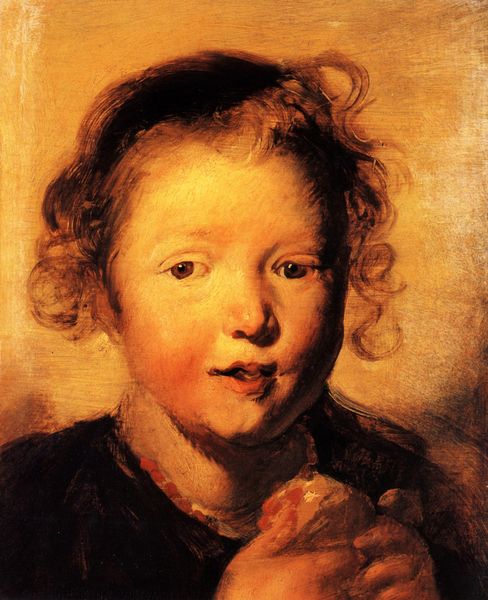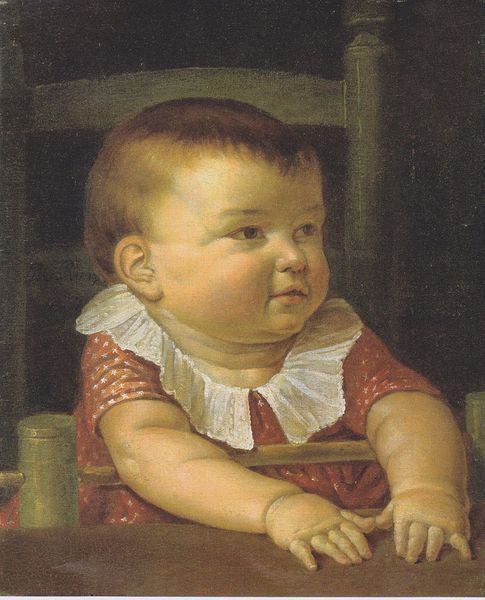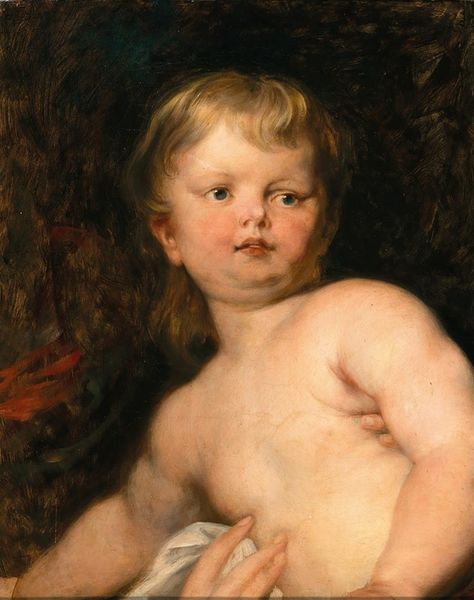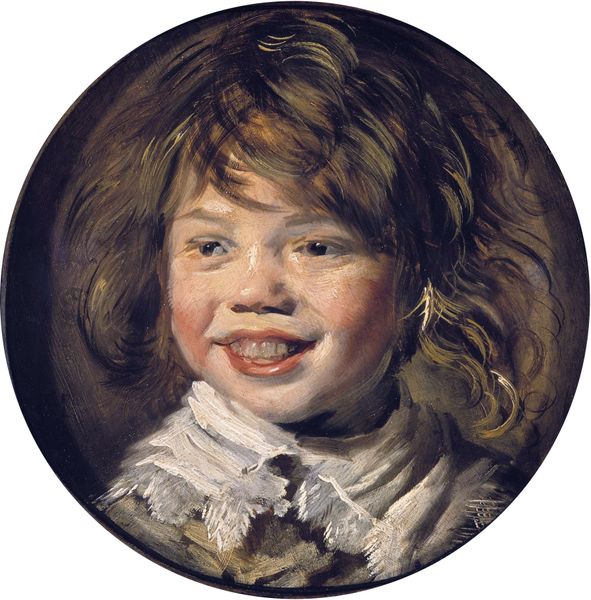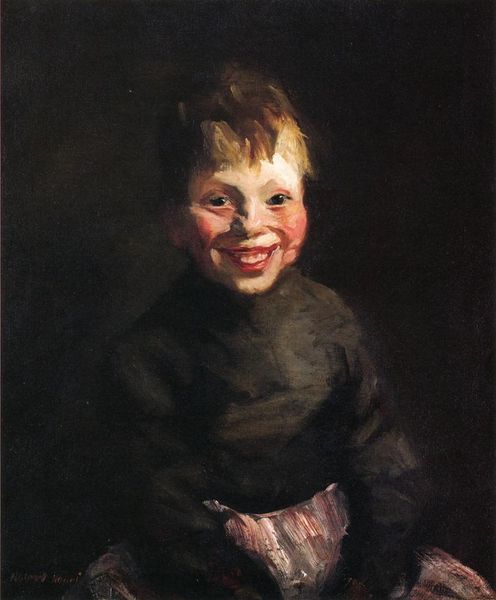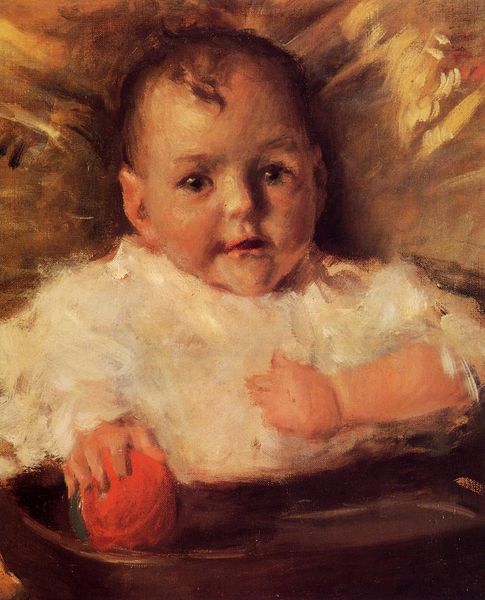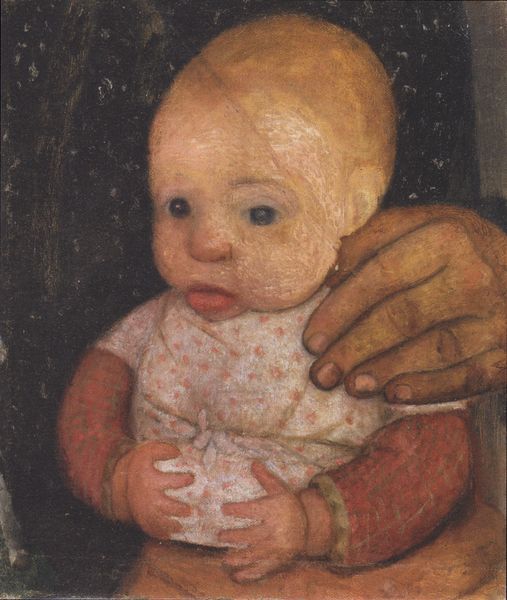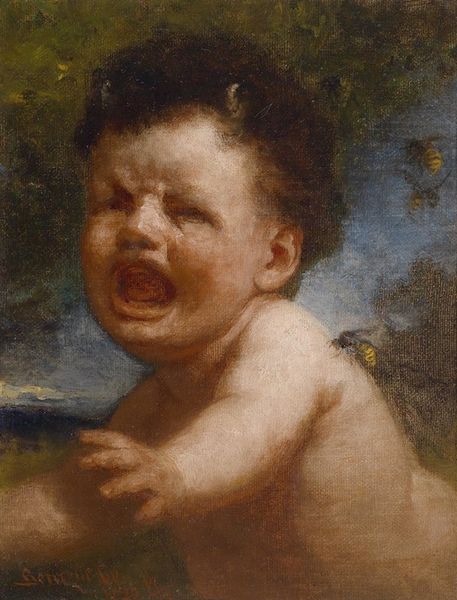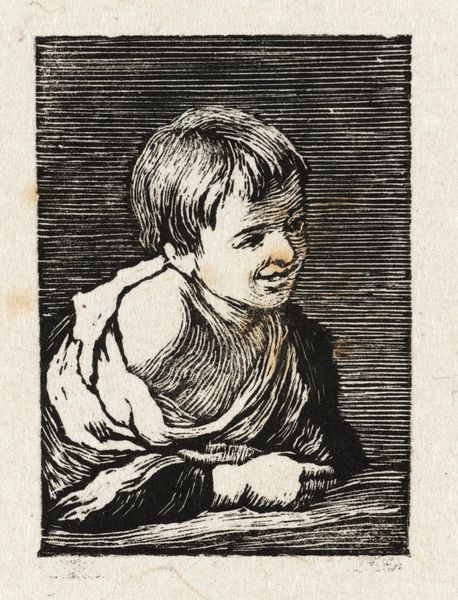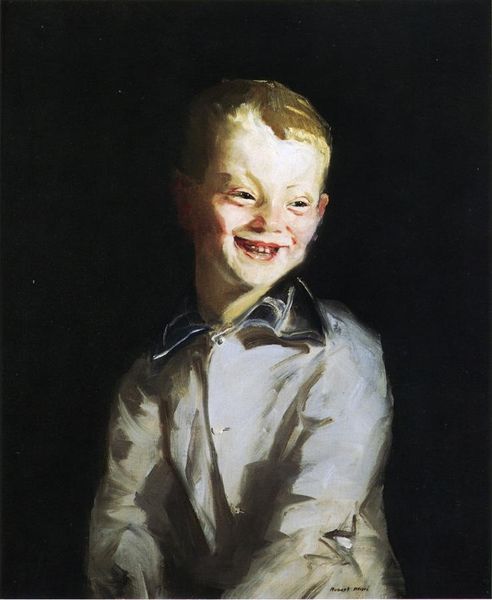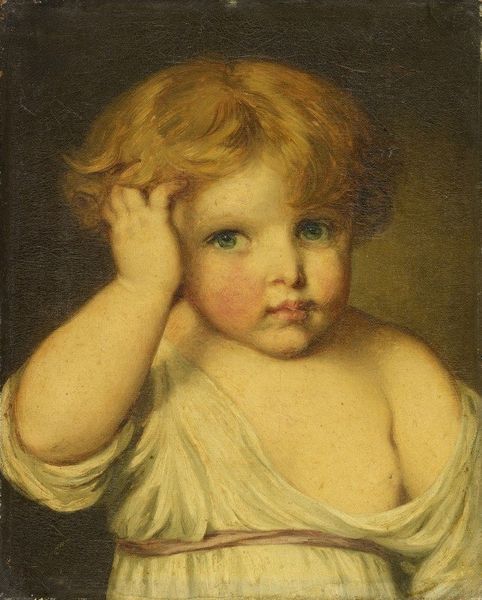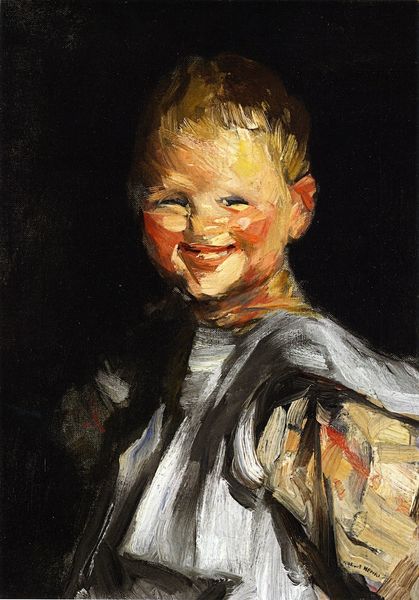
painting, oil-paint
#
portrait
#
baroque
#
portrait
#
painting
#
oil-paint
#
figuration
#
genre-painting
Dimensions: 38.3 x 28.3 cm
Copyright: Public domain
Editor: Here we have Jacob Jordaens’ “Study of a Little Child” from 1626, an oil painting that just exudes the essence of childhood. It’s hard to put my finger on it, but something about his rosy cheeks and the way he's got his fingers in his mouth evokes such a primal innocence. What do you see in this piece? Curator: It's remarkable, isn't it? Consider the history of childhood as a cultural construct. For centuries, children were depicted as miniature adults. This portrait, however, offers a tender observation of infancy. Notice how the light catches the child’s plump cheeks and tiny fingers. Do these elements remind you of anything familiar? Editor: Hmmm, the rounded shapes and fleshy tones are reminiscent of depictions of cherubs. Is there a connection? Curator: Precisely! There's a symbolic link here, subtly elevating the child while rooting the portrait in a longer tradition. Jordaens is not just painting a child; he’s tapping into pre-existing associations with innocence and purity. The shadows, almost swallowing the child, speak of life's fleeting nature, urging us to cherish youth. Editor: That's a poignant reading. So, it’s not just a cute kid but a carefully constructed image laden with meaning. Curator: Yes. It's an intersection of genre painting and symbolism, a snapshot of everyday life imbued with cultural memory. It’s Baroque realism imbued with emotional depth. What do you think of it now? Editor: It gives me a greater appreciation for Jordaens as an artist and his contribution to portraying childhood through symbolic language. Curator: Exactly. We have witnessed how an apparently straightforward image resonates with cultural memory and offers more complex reflections.
Comments
No comments
Be the first to comment and join the conversation on the ultimate creative platform.
